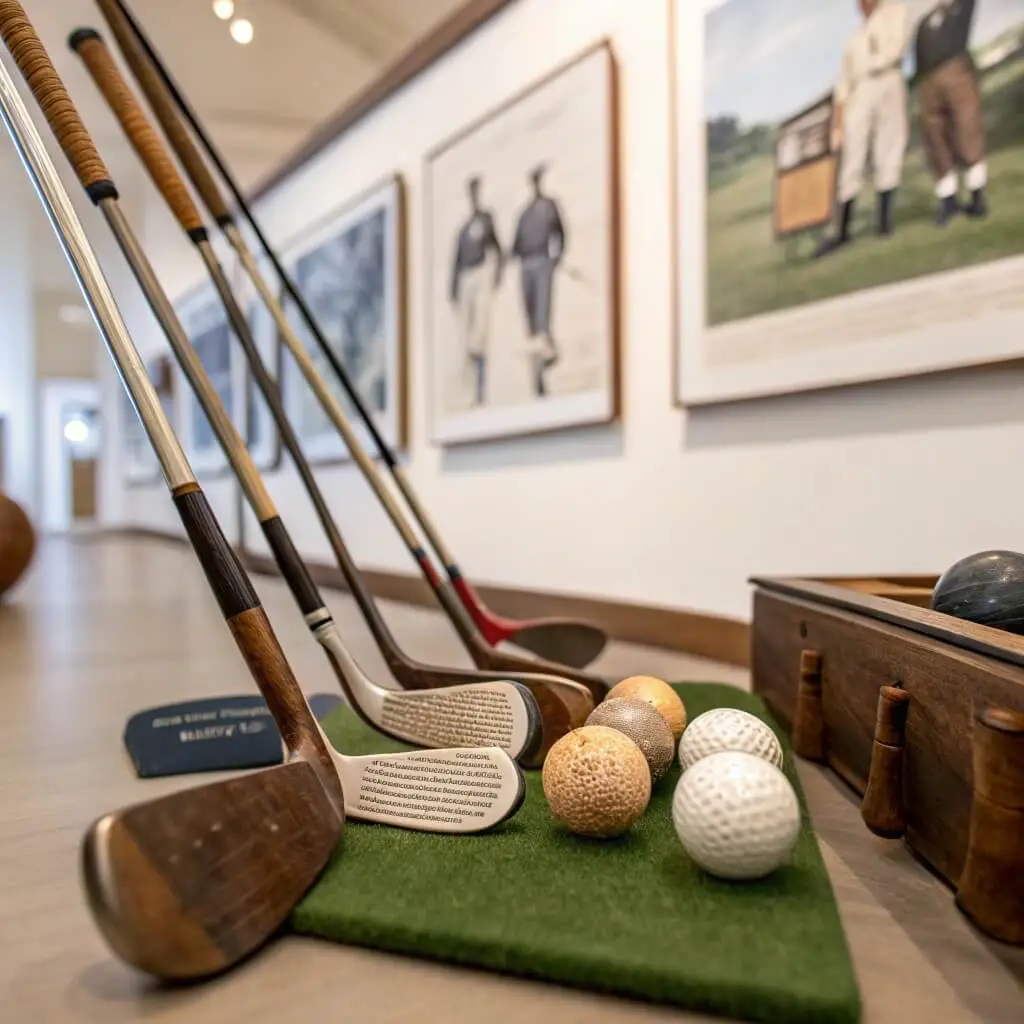Golf has undergone a fascinating transformation over the centuries. From the rough pastures of Scotland to today’s lush, manicured fairways, the game has adapted alongside changes in technology, society, and sports science. One of the most notable developments in this journey has been the shift in equipment, especially the transition from hickory-shafted clubs to today’s advanced hybrid designs. This article explores the history, milestones, and key moments that have shaped the evolution of golf, with a special focus on how equipment has evolved in response to the changing demands of the sport.
Origins of Golf: A Game of the Pastures
The roots of golf trace back to 15th-century Scotland. Although some historians argue that similar stick-and-ball games were played earlier in other cultures, it was in Scotland where golf truly began to take shape. Played on coastal links land using rudimentary equipment, early golf bore only a faint resemblance to the game known today. The first golfers used hand-carved wooden clubs and feather-stuffed balls, making skill more about adaptability than precision.
The Age of Hickory: Craftsmanship and Challenge
By the 18th and 19th centuries, golf had developed into a recognizable sport with more structured rules and dedicated courses. During this period, clubs made from hickory wood became standard. Hickory, prized for its flexibility and strength, was the dominant material used in club shafts for over a century.
Hickory clubs required a particular technique. They were less forgiving, which meant that consistent success depended on mastering the nuances of a fluid and controlled swing. Players had to develop a rhythm and an intuitive feel for the game. The clubheads were typically made from persimmon or other hardwoods, often handcrafted by skilled artisans. These clubs were as much works of art as they were sporting tools.
While hickory clubs brought a sense of romance and tradition to the game, they also presented physical limitations. The shafts could break easily, especially in wet conditions, and the lack of consistency in manufacturing meant that each club had its own personality.
The Arrival of Steel: Forging a New Era
The 20th century saw a dramatic shift in golf equipment. In the 1920s and 1930s, steel shafts began to gain popularity. The United States Golf Association and the Royal and Ancient Golf Club of St Andrews eventually approved their use, opening the door for a major transformation.
Steel shafts brought several advantages. They were more durable, allowed for greater consistency, and supported a wider range of swing speeds. As players adopted these shafts, the game became more predictable, and club manufacturers began standardizing their production. For the first time, mass production could offer equipment that met the needs of a broader range of players, not just skilled artisans or elite golfers.
This period also saw the development of new clubhead designs and materials. Iron heads began to be made with precision-forged or cast steel, increasing durability and performance. Drivers and fairway woods retained their wooden heads for a while, but even these began to evolve with new materials and coatings.
The Graphite Revolution: Lightweight Innovation
The 1970s and 1980s brought another major innovation in the form of graphite shafts. Much lighter than steel, graphite allowed players to generate higher swing speeds with less effort. This was especially beneficial for senior players, women, and those with slower swing tempos.
Graphite shafts also opened the door to greater customization. Shaft flex, weight, torque, and kick point could now be tailored to a player’s individual needs. This personalization further democratized the game and allowed golfers of all skill levels to access equipment that suited their style.
Graphite’s introduction coincided with advances in computer-aided design, allowing manufacturers to refine club shapes and aerodynamics. The combination of lighter shafts and scientifically optimized heads led to increased distance and improved ball control.
The Rise of Titanium and Composite Materials
By the late 1990s and early 2000s, titanium emerged as the preferred material for driver heads. Stronger and lighter than steel, titanium allowed engineers to design larger clubheads with thinner faces, creating more forgiving sweet spots and greater energy transfer.
Composite materials soon followed, enabling manufacturers to fine-tune the weight distribution within the clubhead. By adjusting the center of gravity and moment of inertia, club designers improved both the distance and accuracy of shots. This era marked the beginning of performance-driven golf, where technology and engineering played as vital a role as technique and strategy.
Enter the Hybrid: Bridging the Gap
One of the most significant equipment innovations of the 21st century has been the hybrid club. Designed to combine the forgiveness of a fairway wood with the precision of a long iron, hybrids have become a staple in modern golf bags.
Long irons have always been difficult to hit consistently, especially for amateur golfers. Hybrids address this issue by featuring a larger clubhead, lower center of gravity, and wider sole. These features help the club glide through turf and provide a higher launch angle, making it easier to achieve good results even from challenging lies.
Originally met with skepticism, hybrids have now been embraced by professionals and amateurs alike. Even tour players often replace their two or three iron with a hybrid, especially on courses with long par threes or tricky rough.
Digital Age and Custom Fitting
As technology continued to evolve, so did the tools available to golfers and club fitters. Launch monitors, swing analyzers, and simulation software allow for precise measurements of swing speed, launch angle, spin rate, and more. This data-driven approach to golf equipment has led to a new level of customization.
Custom fitting is no longer a luxury reserved for professionals. Golfers at every level can now have clubs tailored to their exact specifications. From shaft length and flex to lie angle and grip size, each element can be fine-tuned to optimize performance.
Additionally, smart sensors embedded in clubs or worn on the golfer’s body provide real-time feedback and analytics. Players can use this information to refine their technique, track progress, and make informed decisions about their equipment.
Modern Golf Balls: Distance and Control
While clubs have undergone substantial evolution, golf balls have seen equally transformative changes. Early golf balls, like the featherie and the gutta-percha, were unpredictable in flight and easily damaged. Today’s balls feature multilayer construction, advanced dimple patterns, and materials engineered for specific performance characteristics.
Modern golf balls can be optimized for distance, spin control, or feel, depending on the player’s priorities. Tour-level balls often feature a soft urethane cover for enhanced control around the greens, while distance balls may prioritize lower spin and higher velocity off the tee.
The synergy between advanced golf balls and high-tech clubs has pushed the limits of what players can achieve, even at the amateur level.
Influence of Professional Tours and Endorsements
The professional game has played a key role in driving equipment evolution. When tour players adopt a new technology, it gains credibility and exposure. Equipment manufacturers invest heavily in research and development, often working directly with elite players to create and refine new products.
Endorsements and televised tournaments have also helped shape consumer preferences. Seeing professionals succeed with a certain driver or ball often influences amateur purchasing decisions. As a result, innovation in golf equipment tends to move quickly, with each season bringing new advancements and models.
Environmental Considerations and Sustainable Innovation
As the world becomes more conscious of sustainability, the golf industry has also begun to address environmental concerns. Manufacturers are exploring eco-friendly materials, energy-efficient production processes, and recyclable packaging. Golf courses themselves are shifting toward more sustainable maintenance practices, including water conservation and integrated pest management.
The challenge moving forward will be balancing innovation with responsibility. Golf, by its nature, celebrates tradition, yet it must also adapt to the modern world’s ecological realities.
Conclusion: A Game in Constant Evolution
The story of golf’s evolution from hickory to hybrid is a testament to the sport’s unique blend of heritage and innovation. While the early game demanded adaptability and resilience, modern golf emphasizes performance, precision, and personalization. Every advancement in materials, design, and technology has aimed to make the game more accessible, enjoyable, and rewarding.
Yet, despite all these changes, the core essence of golf remains the same. It is still a game of integrity, strategy, and perseverance. Whether played with handcrafted hickory clubs or state-of-the-art hybrids, golf continues to challenge the body and mind while offering the simple joy of a well-struck shot.
As we look ahead, golf will no doubt continue to evolve. The tools may change, but the spirit of the game endures. In every era, from pastures to performance labs, golf has found a way to honor its traditions while embracing the future.

